World War I is one of the deadliest wars known to humanity. Around 60 million soldiers were mobilized to fight in the war. By the time the war ended, it had already killed 16 million people (including soldiers and civilians). Moreover, the large scale mobilization of troops and the bad conditions during warfare, led to the spread of Spanish flu, killing another 50 – 100 million people. This blog post helps you understand what started the first world war so that we can hopefully avoid another such war.
If you are interested in learning more about the Spanish flu and how it spread, you can read it here: Worst epidemics in history.
This blog post mentions the reasons for the first world war briefly and explains in detail, the single event that started the war.
Reasons for the first world war
So, what started the first world war?
Even though several incidents led to the first world war, the following events are the most important among them.
Increased military spending by every major power in Europe led to increased tension between the countries. Loosely formed alliances and the desire of every country to increase its influence (and territory) while keeping the other countries under check added fuel to the fire.
While these circumstances pushed Europe to the brink of war, they did not start the war. The war itself was caused by a single bullet, the one that killed the heir presumptive to the throne of Austria-Hungary.
Food for thought: Who is a heir presumptive?
“An heir presumptive is the person entitled to inherit a throne, peerage, or other hereditary honour, but whose position can be displaced by the birth of an heir apparent or of a new heir presumptive with a better claim to the position in question” – Wikipedia
What started the first world war?
Austria-Hungary and Serbia
Let’s travel back in time and see how the events that (chronologically) happen in Serbia affect Austria-Hungary (and vice-versa) one after another.
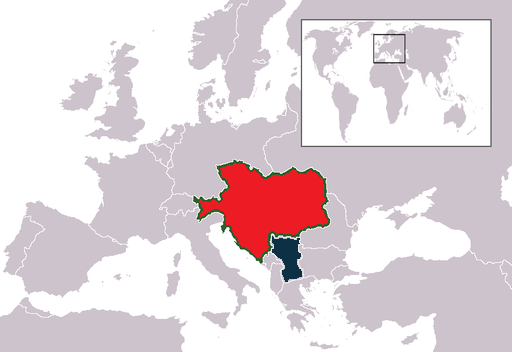
Picture credits – Cassini83 [Public domain]
The events that happened in Austria-Hungary are shown in Red color, whereas those that happened in Serbia are shown in Astronaut Blue color.
Serbs are a South Slavic ethnic group. Serbia, due to its strategic position between Europe and Asia, is conquered by several influential empires throughout its history. The Romans and the Ottoman Turks, the most notable powers among those, each rule Serbia for centuries.
Austria-Hungary or the Austro-Hungarian Empire is a nation that exists between 1867 and 1918.
Austria-Hungary is the second biggest European country. Even though it is a great power, it consists of several ethnic groups.
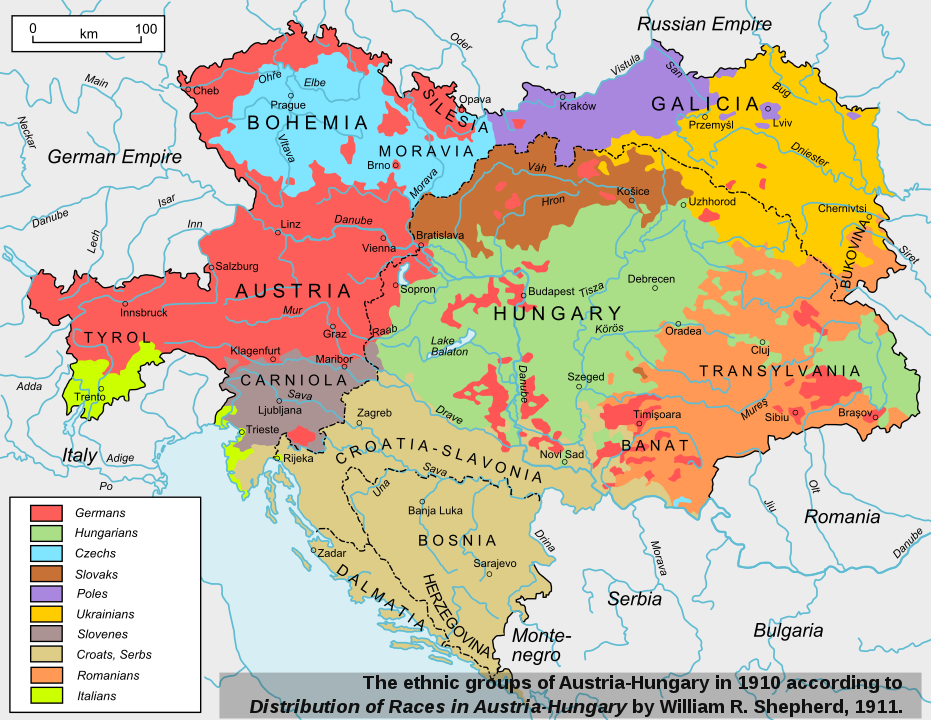
By Andrein – Transferred from en.wikipedia to Commons., Public Domain, Link
Race for the Balkan peninsula
For centuries, Russia and the Ottoman Empire are hostile to each other, resulting in occasional wars. In 1856, Russia loses in the Crimean War (1853 – 1856), and along with the war, the ability to take control of the capital of the Ottoman Empire.
So, it decides to extend its influence in the Balkan region, which consists mostly of Slavs, like in Russia. In 1877, with the help of Romania and Greece, Russia defeats the Ottoman Empire and tries to create a large Bulgaria, that could become an ally of Russia.
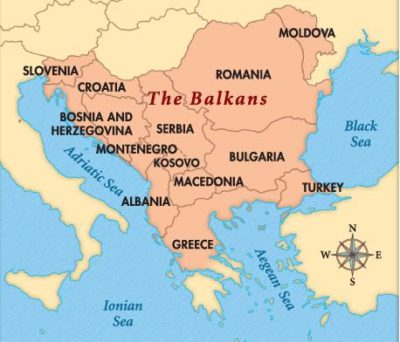
Fearing that a large ally in the Balkan region would make Russia too powerful, in 1878, the Congress of Berlin, a meeting consisting of representatives of the six most powerful nations at that time, splits the Balkan region into more countries.
As a result, Serbia, Montenegro, and Romania gain independence as well. To keep the region under check, Britain takes over Cyprus, and Austria-Hungary takes over Bosnia and Herzegovina (but not fully included as Austria-Hungary’s province).
Serbia becomes an independent country in 1878 and is ruled by the Obrenovic dynasty, which is not interested in the progress of Serbia. Since Austria is the largest customer of Serbia’s agricultural products, Serbia becomes economically dependent on Austria, and the Serbian kings become loyal supporters of Austria.
However, this causes unrest among Serbian civilians, who admire Russia while fearing the consequences of an Austrian expansion.
Archduke Franz Ferdinand
Meanwhile, in Austria-Hungary, due to the death of the prince of Austria, the king’s nephew, Franz Ferdinand, becomes the heir presumptive to the throne of Austria.
In the late 1890s, Archduke Franz Ferdinand falls in love with a lady of less royalty than him.
In 1899, Emperor Franz Joseph (Franz Ferdinand’s uncle) agrees to the marriage on one condition. His wife and children may not share his royalty, i.e., his wife cannot sit with him in royal meetings, public processions, theatres, and royal carriages.
However, in military meetings and processions, she may share his position and sit beside him.
King Peter, the Liberator
In Serbia, the civil hate for the Obrenovic dynasty increases, when Alexander I, the last Obrenovic king, marries a widow, who is ten years older than him and notorious for her numerous sexual associations.
In May 1903, the Royal Serbian army murders the king and his wife.
Russia then declares Peter, the supreme commander of the Serbian army in the Balkan wars, as the next king. King Peter wastes no time in relaxing suppressive laws and transforms the country into a democracy and a modern economy.
People accept King Peter, who would later come to be known as King Peter, the Liberator.
Due to their empathetic king, Slavs across the world start envisioning Serbia as a haven for all Slavs, not just Serbs. Many even want to make it the center of future Yugoslavia.
Annexation of Bosnia and Herzegovina
Meanwhile, in October 1908, Austria-Hungary expands to include Bosnia and Herzegovina, two Balkan provinces it has previously taken control of, as its provinces.
This move by Austria-Hungary is met with protests not only from Serbia but also from most major powers and Montenegro.
Reclaiming the Serbian territory from the Ottoman Empire and the Austro-Hungarian Empire becomes a widely accepted notion in Serbia.
As a result, Serbia enters the Balkan wars (1912 – 1913).
Food for thought: Why were the Balkan wars fought?
First Balkan war
Serbia and other Balkan nations (Greece, Bulgaria, and Montenegro) have obtained independence from the Ottoman Turks. However, regions, where people belonging to these Balkan nations were prevalent, were still part of the Ottoman Empire. In the first Balkan war, an alliance of these Balkan nations fights together to reclaim these territories and end the Ottoman Empire’s rule in Europe.
Russia helps Serbia and Bulgaria come into an alliance so that it can have allies to exert its influence in the Balkan region.
Second Balkan war
Due to competing claims over certain territories, the victors of the First Balkan war fight against themselves.
Serbia was victorious and almost doubled its size after the Balkan wars.
On the other hand, Bulgaria loses big and turns to the Triple Alliance (Germany, Austria-Hungary, and Italy) for help. This leaves Serbia as the only ally of Russia in the Balkan region. Hence, Russians are forced to protect Serbia.
The rise of Serbian nationalism
In both the Balkan wars, Serbia emerges victorious, becoming twice as big.
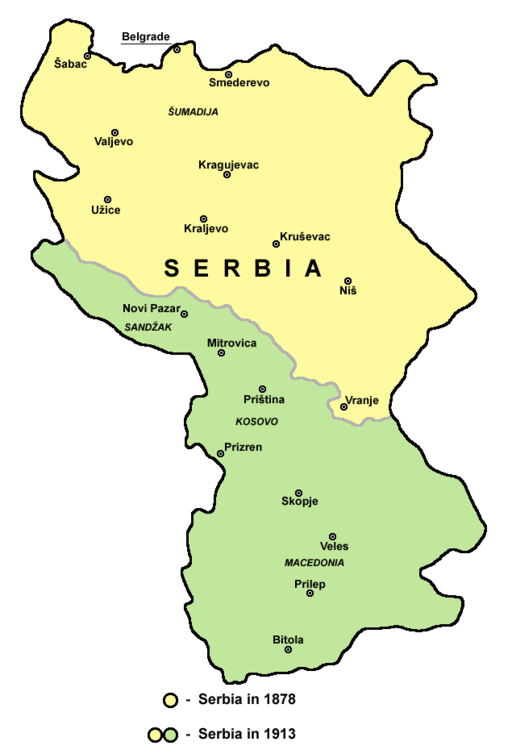
Picture credits – PANONIAN [CC0]
As a result, Serbians become more ambitious. They form nationalist groups which want to end Austria-Hungary’s influence in the Balkan region.
Some of these prominent nationalist groups are like People’s Defence, the Black Hand, and Young Bosna. Their motive is to break off Bosnia and Herzegovina (Austria-Hungarian provinces) from Austria-Hungary so that they can be combined to form Yugoslavia.
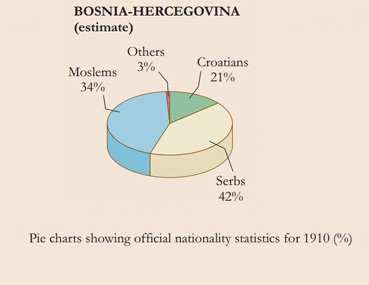
Picture credits
The Assassination of Archduke Franz Ferdinand
Meanwhile, in 1914, at a time when the relations between Serbia and Austria-Hungary are at a low, and many Slavs (in Bosnia and Herzegovina) are antipathic towards Austria-Hungary, Archduke Franz Ferdinand goes to Sarajevo (the capital of Bosnia and Herzegovina now) to oversee the imperial armed forces there. One of the reasons for his visit is that, since it is a military activity, his wife can accompany him as his equal.
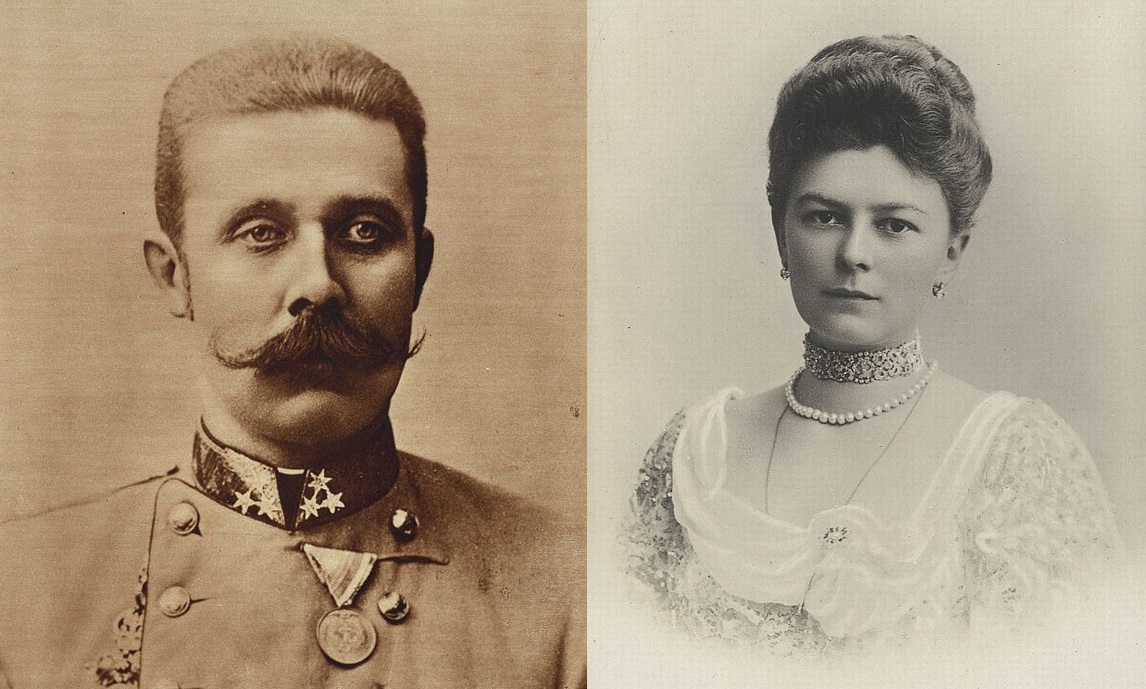
By Carl Pietzner – Public Domain, Link & By Unknown – from German language Wikipedia [1], Public Domain, Link
When the carriage carrying the Archduke and his wife comes to an abrupt halt in Sarajevo by mistake, a member of the Black Hand (a Serbian nationalist group) shoots both of them at point-blank range and kills them.
This move annoys Austria-Hungary, and it considers a war against Serbia. But it waits for German support.
Germany provides its support and asks Austria-Hungary to act soon. However, Austria-Hungary takes three weeks to issue an ultimatum to Serbia, with demands that are too difficult to accept.
Meanwhile, Russia ensures its support for Serbia.
On July 28, 1914, Austria-Hungary declares war on Serbia, and the first world war begins.
How did a war between Austria-Hungary and Serbia turn into a world war?
Before the first world war, a handful of defense alliances between major superpowers existed. Some of the notable ones were:
1. Austria-Hungary and Germany
2. Serbia and Russia
3. Russia and France
4. France, Belgium, and Britain
5. Britain and Japan
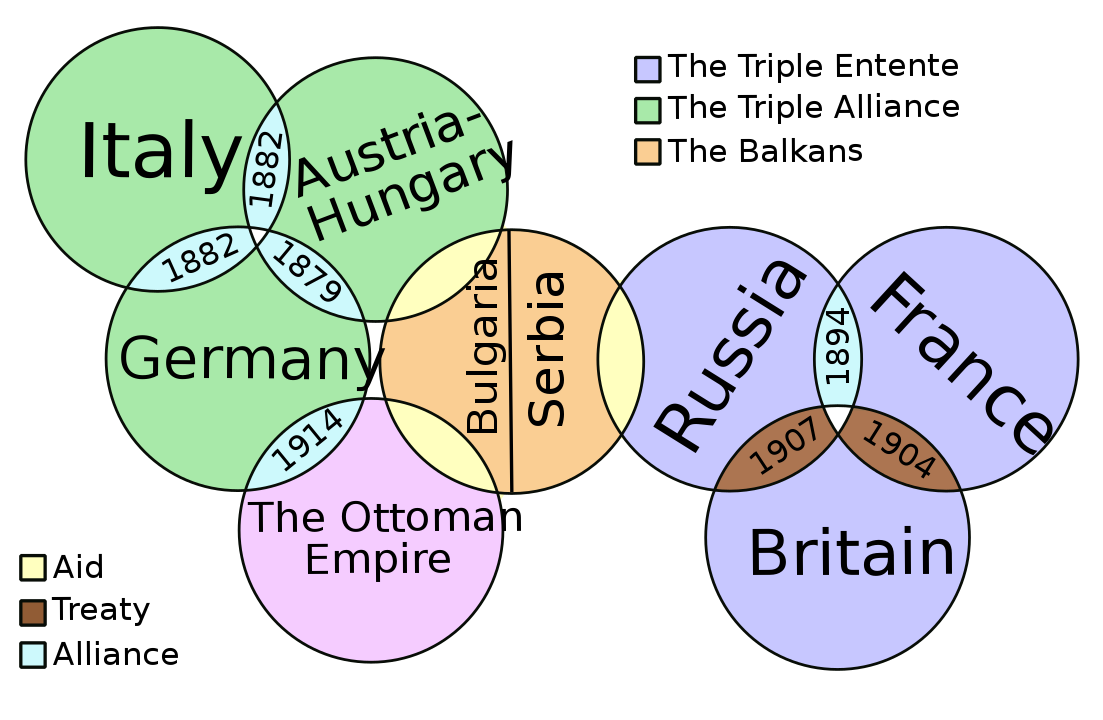
By It Is Me HereXiaphias – Derived from en:Image:WWIchartX.png, CC BY-SA 4.0, Link
These agreements stated that, if one country was attacked, its alliance partner should mobilize its forces to defend the country being attacked.
Due to these alliances, a war between Austria-Hungary and Serbia turned into a full European war and later into a world war.
We are sure that this blog post helped you understand what started the first world war.
Please read our blog post on the first world war which explains how the first world war progressed: First world war
As you can see, the nationalist ambitions of a small group caused the loss of lives of at least 16 million people. So, in today’s world, where several countries possess nuclear missiles, maintaining international peace has become a higher priority than ever before.
It might appear that maintaining peace is relevant only to countries and not to individuals. However, every one of us has a responsibility to maintain peace.

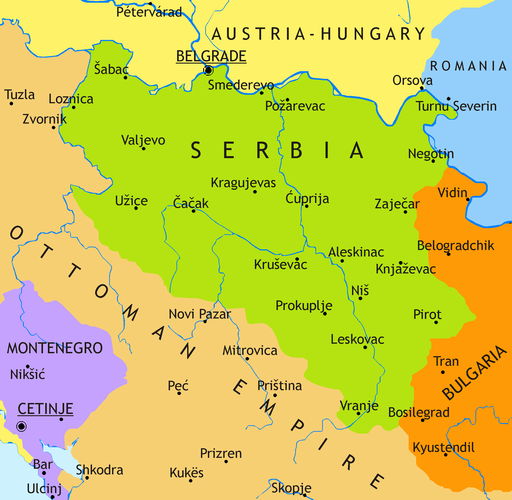
Leave a Reply